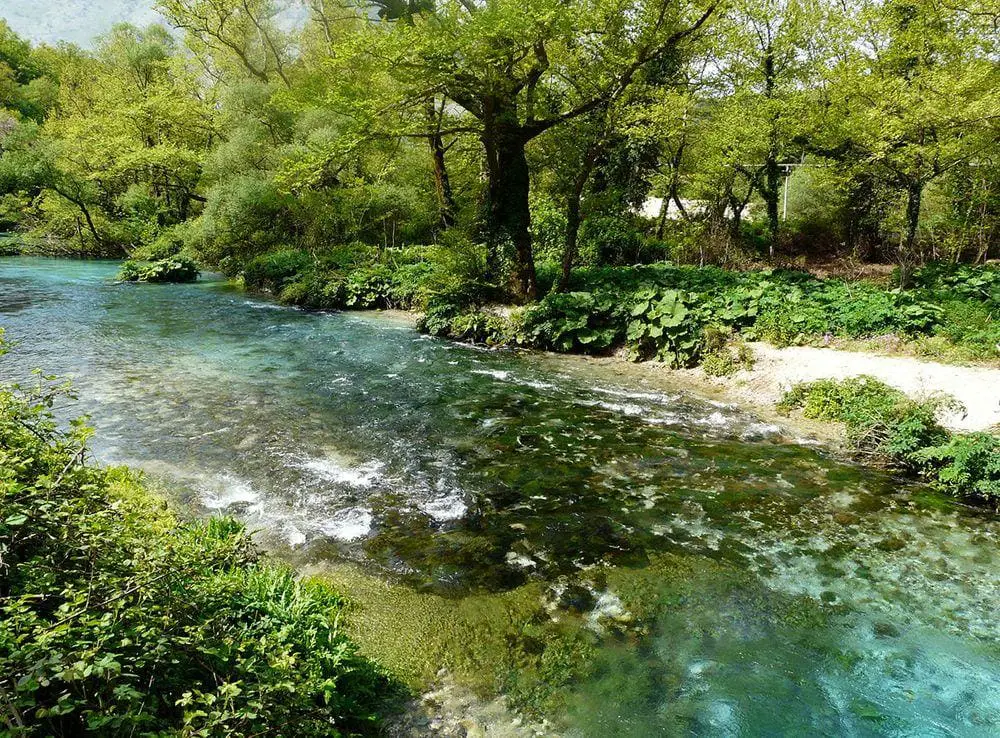Springs 🢔 Geological wonders 🢔 Categories of wonders
Wonder
Syri i Kalter (Blue Eye)
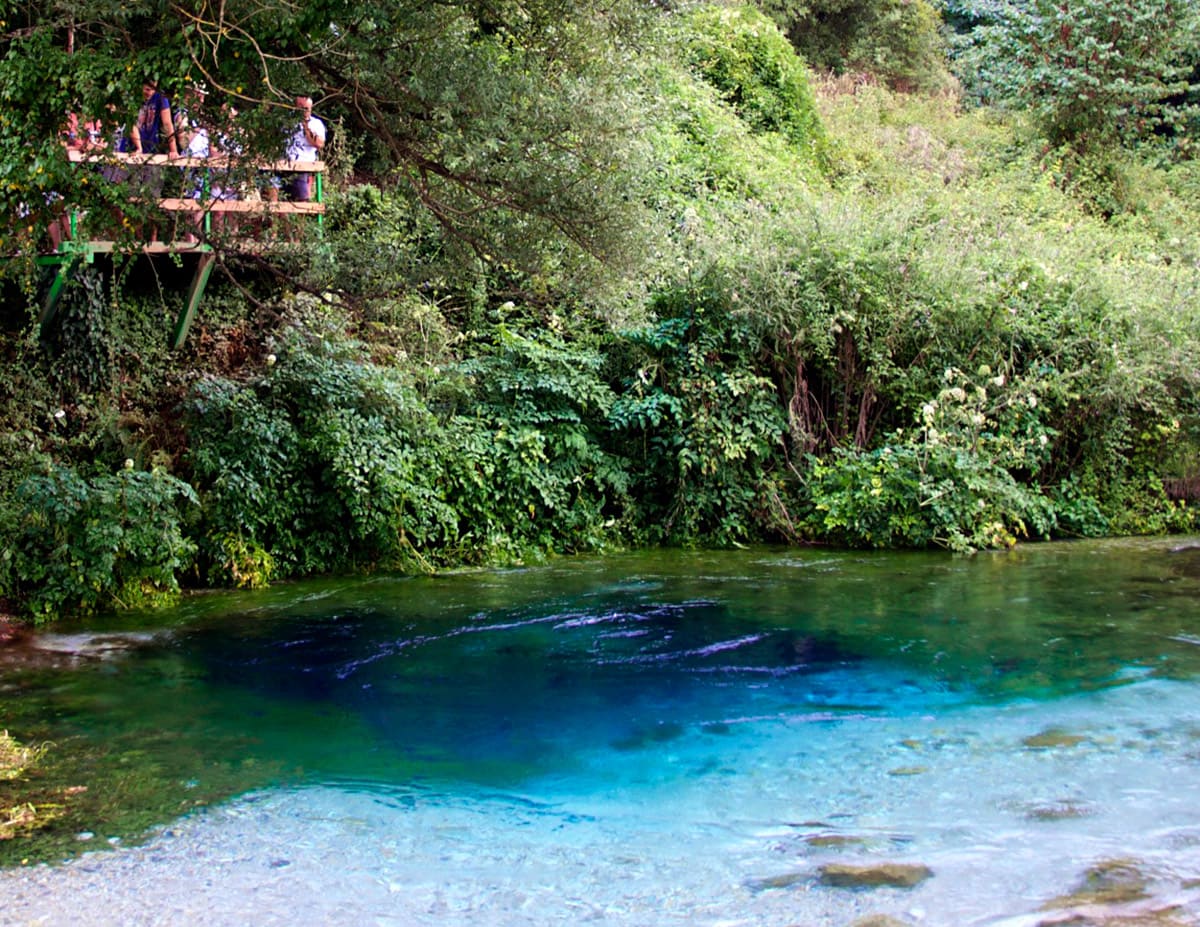
 In short
In short
The cold springs in general are not the most popular tourist destinations but Syri i Kalter in Albania is an exception. This enormous spring has such an amazing play of colors that one can look and think – am I really seeing this or dreaming?
 44.8%
44.8%
GPS coordinates
Name in Albanian
Alternate name
Average discharge
Maximum discharge
Temperature of water
Depth
Map of the site
If you see this after your page is loaded completely, leafletJS files are missing.
 In detail
In detail
A small bit about the geology
Syri i Kalter is one of the most powerful springs in South-Eastern Europe – a region that has some of the most impressive and diverse springs in the world.
This huge spring formed in Mali Gjere karst massif, on a tectonic fault (fracture of Earth’s crust) between Mesozoic – Paleogene carbonates and Tertiary flysch. Spring flows through a layer of Triassic gypsum and anhydrites.
This is so-called Vauclusian spring (named after the magnificent French Vaucluse Spring) – ascending spring that comes out from a deep, almost vertical cave.
Springs serve as a source of the 25 km long Bistricë river.
Some numbers
- Depth. Actual depth is not known. Divers have reached the depth of 45 – 50 m (different numbers are named) but have not reached the bottom. Such diving is dangerous – the stream is very powerful and one has to struggle against it in order to get deeper.
- Discharge. Average discharge of this spring is 6 000 l/s. Whole group of local springs (there are numerous smaller springs around) has a discharge of 11 000 l/s. At high water this spring has reached the discharge of 18 400 l/s.
- Temperature. Water comes from great depth and its temperature is stable. Average temperature is 12,75° C and it fluctuates only per 0.15° C.
Name and legends
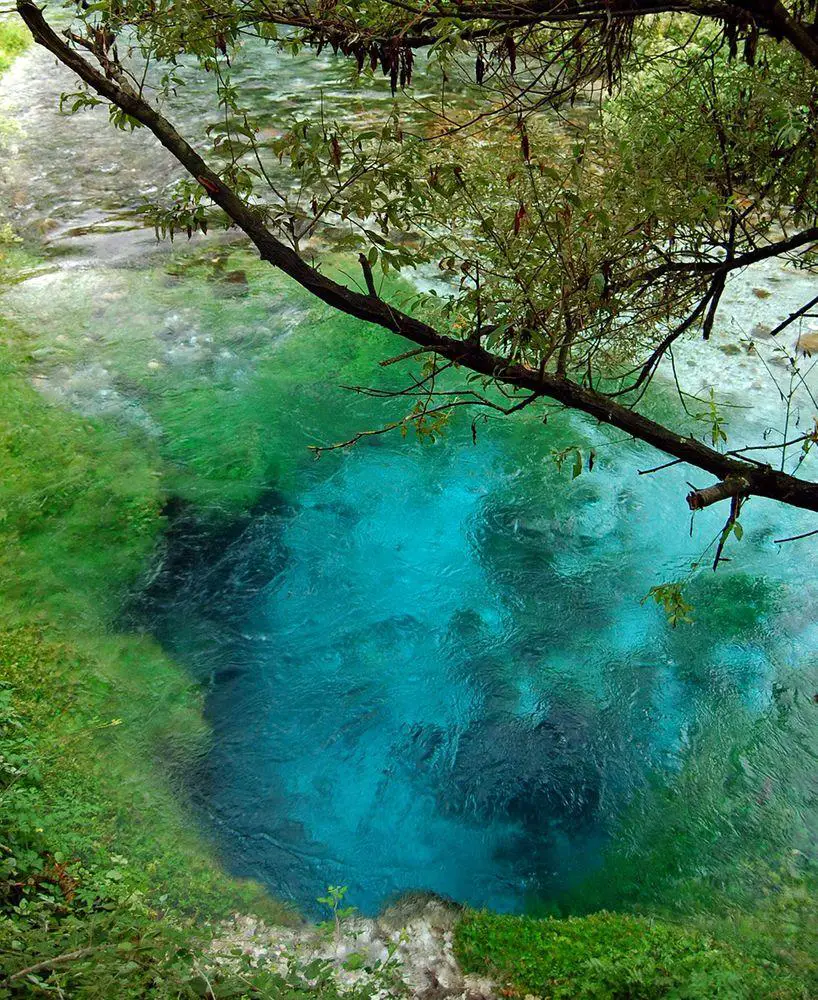
Once upon a time there lived a nasty dragon. Or maybe not, but at least local legends tell that he lived here. He did the usual things that dragons love to do (at least the dragons of old Europe) like terrorized local people, burned the cornfields, took away the water, and, of course, kidnapped the girls.
According to some versions of legends the dragon was defeated by a clever farmer. He burned the dragon by feeding to him a mule with firewood and cinder which was incinerated as the dragon breathed his flame.
As the dragon died, his eye turned into a powerful, beautiful spring. The evil was turned into a blessing.
Eye of the nature
The spring looks like an unusual eye indeed. The pupil of the eye is the central part of spring which is very deep and has an impressive deep blue color. It is surrounded by "iris" – shallow, light blue colored limestone bed of the lake.
The clear, lucid water rises with such speed that there is a bulge over the lake. In fact, some visitors throw stones in the spring and then admire the power of the stream which rises the stones upwards. This practice is not advisable – sooner or later stones might disfigure the beauty of the spring.
Some Albanians consider that this spring has some supernatural properties. Thus, according to locals, weird things happened in October 2002, when the spring suddenly dried out. It happened during the conversations of Italian and local businesses about the possibilities to obtain clean groundwater from the vicinities of the spring. There indeed exists a project to harness spring water from the vicinities of Syri i Kalter and transfer it through a pipeline to Italy.
Tourist trap
Before the mass tourism this had to be a gorgeous place – secluded in a mountainous valley, with fairy tale forest of ancient oaks, hazelnut, cherries, and a multitude of trees around.
In the times of communist dictatorship the site was off-limits to the general population. Only leaders of the Communist Party could visit it.
Now the times have changed. If one wants to avoid the crowd, he should come here early. In the summer months, there should be paid an entrance fee. Near the spring has been built a restaurant – pleasant for visitors but at the same time hopelessly destroying the feel of nature’s sanctity.
Nevertheless this is a gorgeous place, an unusual wonder of nature.
References
- R.Eftimi, S.Amataj, J.Zoto. Groundwater circulation in two transboundary carbonate aquifers of Albania; their vulnerability and protection. Groundwater Vulnerability Assessment and Mapping: IAH-Selected Papers. Accessed on November 28, 2015.
- Zoran Stevanovič, Romeo Eftimi. Karstic sources of water supply for large consumers in Southeastern Europe – sustainability, disputes, and advantages. Accessed on November 28, 2015.
 Linked articles
Linked articles
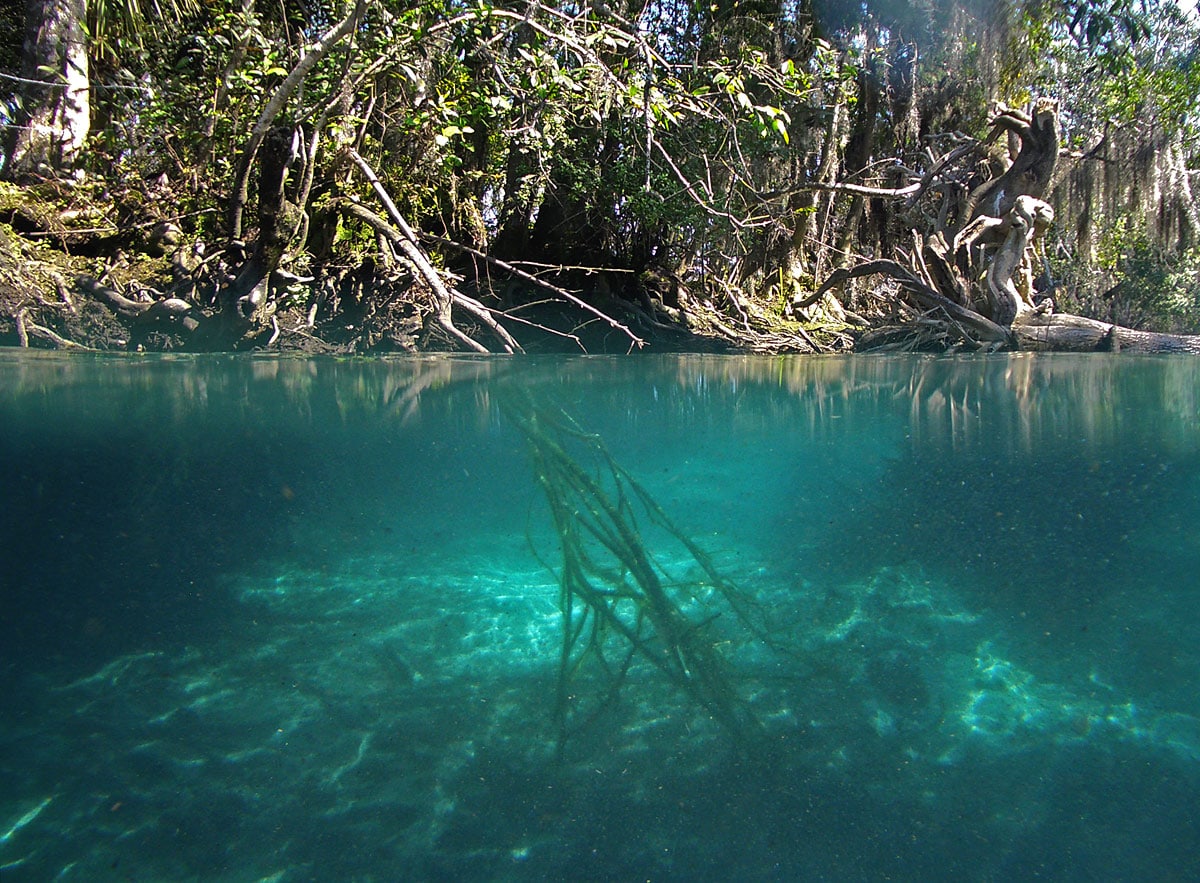
Springs
Powerful natural freshwater springs belong to the most fascinating monuments of nature. Even more exciting is the diversity of unusual springs – mineral springs, hot springs, submarine springs as well as the unusual black smokers. Especially beautiful are such natural rarities as travertine, silica, or salt terraces created by warm and hot springs and, especially, geysers.
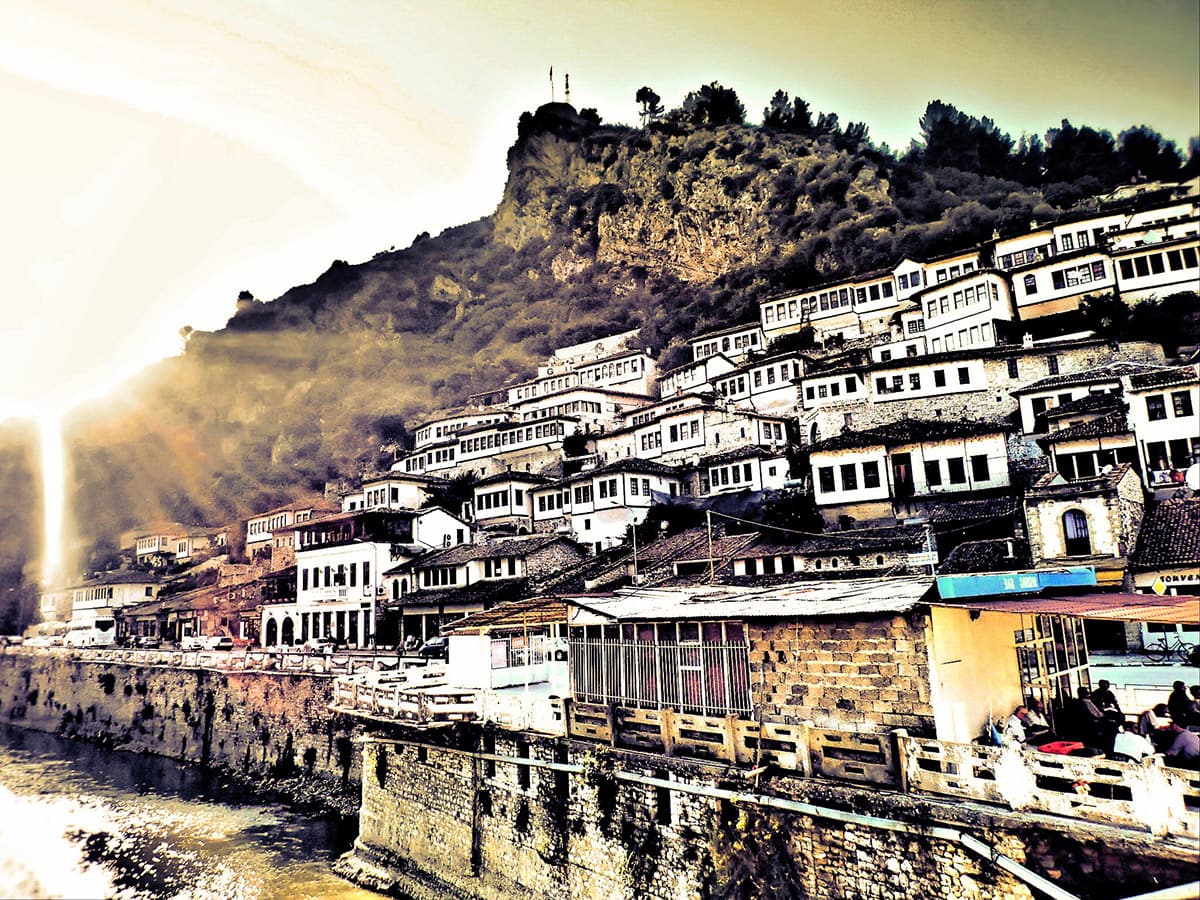
Wonders of Albania
Albania is breathtakingly beautiful… and too little known although it is next to such giants in the world of tourism as Italy and Greece. There are some Albanian landmarks which are known better, e.g. ruins in Butrint and the Old City of Gjirokastër but there is a lot more in Albania that tourist guidebooks and the Internet tell us…
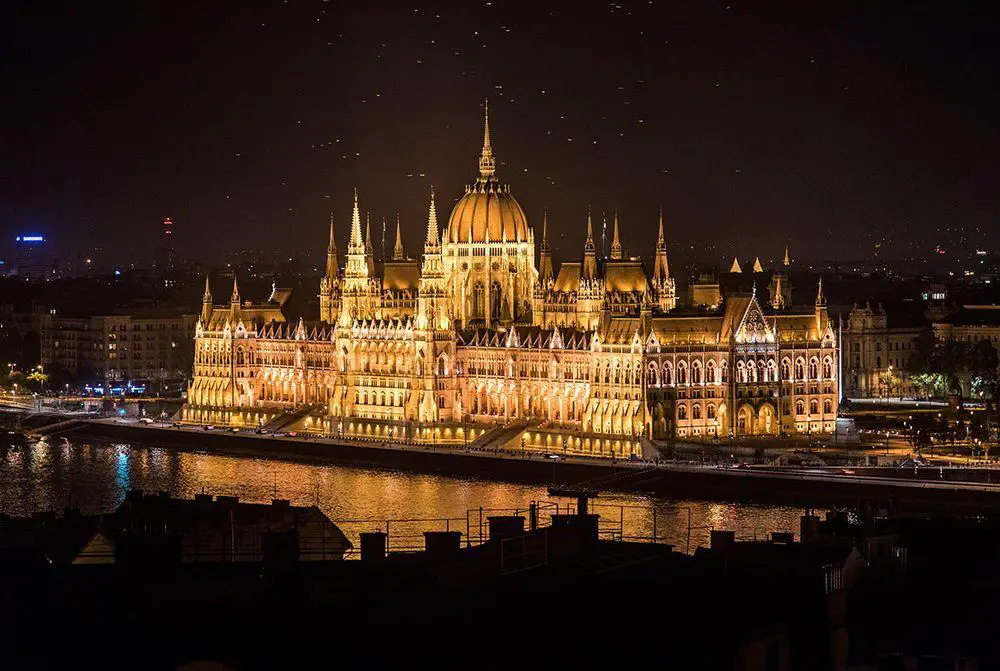
Wonders of Europe
The heritage of Europe is diverse and endlessly interesting. Incomparably rich is the wealth of European historical architecture, but this part of the world has exciting natural heritage and archaeological heritage as well.
 Recommended books
Recommended books
Albania (Bradt Travel Guide)
This new, thoroughly updated sixth edition of Bradt’s Albania remains the only standalone guide to this dynamic and rapidly modernizing eastern European country, from the capital, Tirana, a lively European city, with shopping malls, cycle paths, museums, galleries, and historic buildings, to remote outposts where traditional ways of life prevail.
lbania (Enchantment of the World)
Describes the geography, history, government, economy, people, religion, and daily life of Albania.

